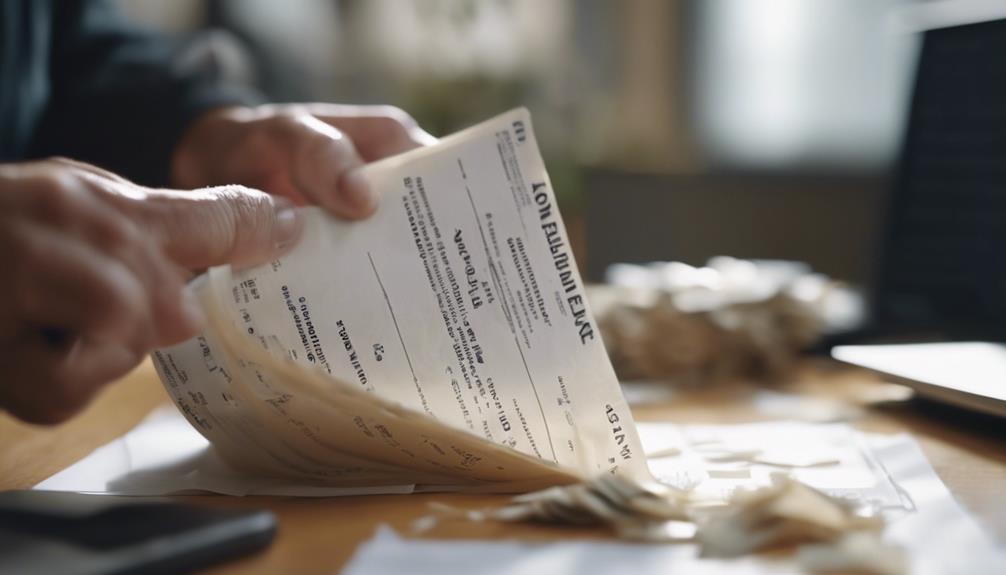To rebalance metals and equities like a pro, set clear target allocations based on your risk appetite—typically 5-15% for metals and around 55% for stocks. Use a disciplined approach with fixed schedules or threshold triggers to adjust your holdings. Keep metals in IRS-approved forms and consider diversification among precious metals. Monitoring market trends and understanding correlation helps optimize your portfolio. If you want expert tips to fine-tune your strategy, you’ll find helpful insights ahead.
Key Takeaways
- Set a clear rebalancing schedule, such as annually or semi-annually, to maintain target asset allocations consistently.
- Use threshold-based triggers (e.g., 5% deviation) to initiate rebalancing of metals and equities.
- Treat precious metals as a separate asset class or as part of alternative investments within your IRA.
- Ensure transactions comply with IRS rules, using reputable custodians and IRS-approved metals for physical holdings.
- Diversify within metals (gold, silver, platinum, palladium) and consider cost implications like storage fees to optimize performance.

Rebalancing metals and equities in your IRA is vital to maintaining your desired asset allocation and managing risk effectively. Over time, market fluctuations cause the value of your assets to shift, potentially skewing your portfolio away from your original plan. If equities outperform, your stock portion increases, exposing you to more market risk than intended. Conversely, metals may decline, diminishing their role as a hedge. Regular rebalancing ensures that your portfolio stays aligned with your financial goals and risk appetite, especially since precious metals behave differently than stocks and bonds.
Most financial experts recommend allocating between 5% and 15% of your IRA to precious metals. If you’re conservative or nearing retirement, sticking closer to 5% minimizes short-term volatility, while younger investors with a longer horizon might lean toward 10-15% for growth and inflation protection. During periods of economic uncertainty or turmoil, some strategies permit increasing metals allocation up to 20%. Your overall portfolio should still have a majority in equities—around 55%—with the rest split among bonds and metals, creating a balanced mix that supports growth and stability.
Experts suggest 5% to 15% of your IRA in precious metals, balancing growth, safety, and risk based on your age and goals.
When it comes to rebalancing strategies, two main approaches work well. Time-based rebalancing involves reviewing and adjusting your portfolio at fixed intervals, such as annually or semi-annually. Threshold-based rebalancing triggers adjustments when asset classes drift beyond a preset percentage from their target allocations. For example, if your gold holdings exceed 15% or fall below 10%, it’s time to rebalance. Treat precious metals as a distinct asset class alongside stocks and bonds to maintain clarity, or bundle metals with “alternative investments” for simplicity. Keep in mind the tax implications when selling metals—selling physical bullion or coins can incur different costs compared to stocks.
Diversification within your metals holdings is pivotal for reducing risk. Instead of holding only gold, include silver, platinum, and palladium to hedge against metal-specific price swings. Diversification strategies are essential for managing volatility and optimizing returns within your portfolio. Incorporating a rebalancing schedule helps you stay consistent and disciplined in maintaining your desired allocations over the long term. Dollar-cost averaging over time minimizes the impact of short-term volatility. Additionally, understanding and monitoring the correlation of metals with other asset classes can help you better manage overall portfolio risk. Be sure to avoid IRS-prohibited collectibles; only IRS-approved bullion and coins qualify for IRAs. Use reputable custodians and secure, IRS-approved depositories for storage, as self-storage isn’t permitted for physical metals. Additionally, understanding the contrast ratio of your projectors can help you select equipment that complements your home cinema setup and enhances viewing quality.
Rebalancing helps leverage the low correlation of metals with stocks and bonds, which can smooth out portfolio volatility during economic stress. Metals act as a hedge against inflation and downturns, so adjusting your holdings periodically allows you to capitalize on this non-correlation. While higher metals allocation can shield your wealth in downturns, it might limit gains during stock rallies. Consistent rebalancing ensures your risk exposure aligns with your tolerance and long-term objectives. Remember, custodial fees and storage costs impact returns, so choose your providers wisely to maximize your portfolio’s performance.
Frequently Asked Questions
Can I Rebalance Metals and Equities Without Tax Consequences?
You can rebalance metals and equities inside your IRA without triggering immediate tax consequences. When you sell one asset and buy another within the account, no taxes are due, as long as the funds stay in the IRA. This flexibility allows you to adjust your portfolio’s allocations freely, helping you respond to market changes and optimize growth, all without worrying about taxes until you make withdrawals or distributions.
How Often Should I Review My IRA Portfolio for Rebalancing?
You should review your IRA portfolio at least once a year to maintain your desired asset allocation. Some investors prefer every 2-3 years or when market shifts cause significant imbalances. A hybrid approach, combining scheduled reviews with trigger-based adjustments, offers flexibility. Keep in mind, frequent reviews can increase costs, so find a balance that fits your schedule, risk tolerance, and investment goals to stay disciplined and responsive.
Are There Specific Tools or Platforms Recommended for Rebalancing?
You’re wondering about tools for rebalancing your IRA portfolio. Platforms like TradeWarrior and tRx offer automation and extensive model management, making rebalancing easier. Quicken and Sharesight help monitor asset drift and suggest trades, while AI-driven tools like Mezzi provide real-time adjustments for ideal performance. These platforms streamline the process, reduce errors, and help you maintain your target allocations efficiently, giving you confidence in your investment strategy.
What Are the Risks of Over-Rebalancing My IRA?
Did you know that frequent rebalancing can reduce your portfolio’s long-term growth by up to 20%? When you over-rebalance your IRA, you risk paying higher trading fees and triggering taxes, which cut into your returns. It can also cause emotional decision-making, leading to selling assets prematurely or missing gains. Too much rebalancing reduces diversification and hampers your ability to adapt to market changes, risking your long-term investment goals.
How Do Market Fluctuations Impact Rebalancing Strategies?
Market fluctuations can cause your portfolio allocations to drift from your target, making rebalancing essential. When markets swing, systematic rebalancing helps maintain your desired risk level and prevents overexposure to certain assets. Using triggers like time or thresholds, you can adjust your holdings proactively. This approach reduces emotional decisions, keeps your portfolio aligned with your goals, and guarantees you’re prepared for market ups and downs.
Conclusion
Rebalancing your metals and equities in an IRA is like tending a garden—you need to regularly trim and nurture to keep everything thriving. By staying disciplined and adjusting your allocations, you guarantee your portfolio remains resilient through market ups and downs. Remember, consistency is your best tool. With a proactive approach, you can steer your investments toward growth and stability, turning your financial future into a well-oiled machine that works for you, not against you.









